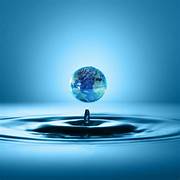What Role Can Technology Play in Solving the Global Water Crisis?
The global water crisis is one of the most pressing challenges of our time, affecting billions of people worldwide. With increasing population growth, climate change, and industrial demands, access to clean and sufficient water is becoming a critical concern. According to the United Nations, approximately 2.2 billion people lack access to safe drinking water, and by 2025, half of the world’s population could be living in water-stressed areas. Addressing this crisis requires innovative solutions, and technology plays a pivotal role in mitigating water scarcity, ensuring water quality, and promoting sustainable use.
This article explores how technology is tackling the global water crisis through advanced methods of conservation, purification, distribution, and monitoring, along with its limitations and future potential.
Understanding the Global Water Crisis
Water scarcity arises from various factors:
- Physical Scarcity: Many regions lack adequate freshwater sources due to arid climates or overuse of available resources.
- Economic Scarcity: Limited infrastructure and financial resources prevent access to clean water, even when it is physically available.
- Pollution: Industrial waste, agricultural runoff, and untreated sewage contaminate water sources, making them unsafe for human use.
- Climate Change: Altered precipitation patterns, droughts, and glacial melting exacerbate water shortages.
To combat these challenges, technology offers innovative tools to optimize water use and address both supply and quality issues.
Technological Innovations in Addressing Water Scarcity
1. Desalination Technology
Desalination involves converting seawater into freshwater, providing a viable solution for water-scarce regions near coastlines. Modern desalination plants use two primary methods:
- Reverse Osmosis: A membrane-based process that filters salt and impurities from seawater.
- Thermal Desalination: Evaporation and condensation techniques to extract pure water.
Advancements in desalination technology, such as energy-efficient membranes and solar-powered systems, have reduced costs and environmental impacts, making it a more sustainable option. Countries like Saudi Arabia, Israel, and Australia rely heavily on desalination to meet water demands.
2. Smart Irrigation Systems
Agriculture accounts for approximately 70% of global freshwater use. Smart irrigation technologies help farmers optimize water usage by:
- Soil Moisture Sensors: These devices measure soil hydration levels and deliver water only when necessary.
- Drip Irrigation: Water is delivered directly to plant roots, minimizing waste.
- AI-Powered Predictive Analytics: Weather data and crop patterns are analyzed to forecast water needs and avoid over-irrigation.
By improving water efficiency, smart irrigation reduces wastage and increases agricultural productivity, addressing both food security and water conservation.
3. Water Recycling and Reuse
Recycling wastewater into potable or non-potable water is a promising way to extend the water supply. Technologies in this field include:
- Membrane Bioreactors (MBRs): These systems combine biological treatment with membrane filtration to purify wastewater.
- Advanced Oxidation Processes (AOPs): Chemical treatments remove organic contaminants, making recycled water safe for various uses.
- Industrial Water Reuse: Factories treat and reuse process water, reducing reliance on freshwater sources.
Cities like Singapore have implemented large-scale water recycling programs, ensuring resilience against water shortages.
4. IoT and Data Analytics in Water Management
The Internet of Things (IoT) and data analytics are transforming how water resources are monitored and managed:
- Smart Meters: These devices track water consumption in real time, helping households and industries identify wastage and adopt conservation practices.
- Leak Detection Systems: Sensors detect leaks in pipelines, reducing water loss during distribution.
- Water Quality Monitoring: IoT-enabled sensors measure pH levels, turbidity, and contaminants in water supplies, ensuring safety standards.
Cloud-based platforms aggregate data from these devices, allowing policymakers to make informed decisions on water distribution and conservation.
5. Atmospheric Water Generation
Atmospheric water generators (AWGs) extract moisture from the air to produce clean drinking water. This technology is particularly beneficial in arid regions where traditional water sources are scarce. AWGs use two primary methods:
- Condensation: Cooling air below its dew point to collect water vapor.
- Desiccant Materials: Absorbing moisture from the air and releasing it as water when heated.
AWGs powered by renewable energy sources can provide decentralized and sustainable solutions to water access challenges.
Promoting Water Quality Through Technology
1. Advanced Filtration Systems
Innovative filtration technologies, such as nanotechnology and graphene-based filters, can remove contaminants like heavy metals, bacteria, and viruses from water. Portable filtration devices are particularly useful in disaster-stricken areas where clean water is unavailable.
2. UV and Ozone Disinfection
Ultraviolet (UV) light and ozone are effective in neutralizing pathogens in water without the need for chemicals. These methods are widely used in municipal water treatment plants to ensure safe drinking water.
3. Decentralized Purification Systems
Small-scale purification units, such as solar water purifiers, provide clean water to remote communities. These systems are cost-effective, easy to maintain, and ideal for areas lacking centralized infrastructure.
Addressing Challenges in Technology Adoption
While technology offers promising solutions, several barriers hinder its widespread adoption:
- High Costs: Many technologies, such as desalination plants and IoT systems, require significant upfront investment, making them inaccessible to low-income regions.
- Energy Requirements: Processes like desalination and atmospheric water generation consume large amounts of energy, raising concerns about sustainability.
- Infrastructure Gaps: Developing countries often lack the infrastructure needed to implement advanced water technologies effectively.
- Public Awareness: Limited knowledge about water-saving technologies and practices among the general population can impede adoption.
Overcoming these challenges requires global collaboration, government support, and private sector investment to make water technologies affordable and accessible.
Future Prospects for Technology in Water Management
The future of water technology is shaped by ongoing research and innovation:
- AI and Machine Learning: Advanced algorithms will predict water demand, optimize distribution, and detect anomalies in supply systems.
- Renewable Energy Integration: Solar and wind energy will power desalination and recycling processes, reducing their carbon footprint.
- Water-from-Air Solutions: Research into more efficient AWG systems promises scalable solutions for water-scarce regions.
- Global Collaboration: International partnerships will facilitate the sharing of technologies, knowledge, and resources to tackle the water crisis collectively.
As these advancements continue, the integration of technology with sustainable practices will be key to solving the global water crisis.
Conclusion
Technology has the potential to play a transformative role in addressing the global water crisis. From desalination and smart irrigation to water recycling and IoT-enabled management, innovative solutions are helping to optimize water use, enhance quality, and ensure access for all. However, realizing this potential requires addressing financial, infrastructural, and social barriers, as well as prioritizing sustainability.
By leveraging technology alongside global cooperation and education, humanity can move closer to achieving water security and ensuring a future where clean water is accessible to all. The global water crisis is a solvable challenge—one that calls for ingenuity, determination, and a collective commitment to preserving this essential resource.


